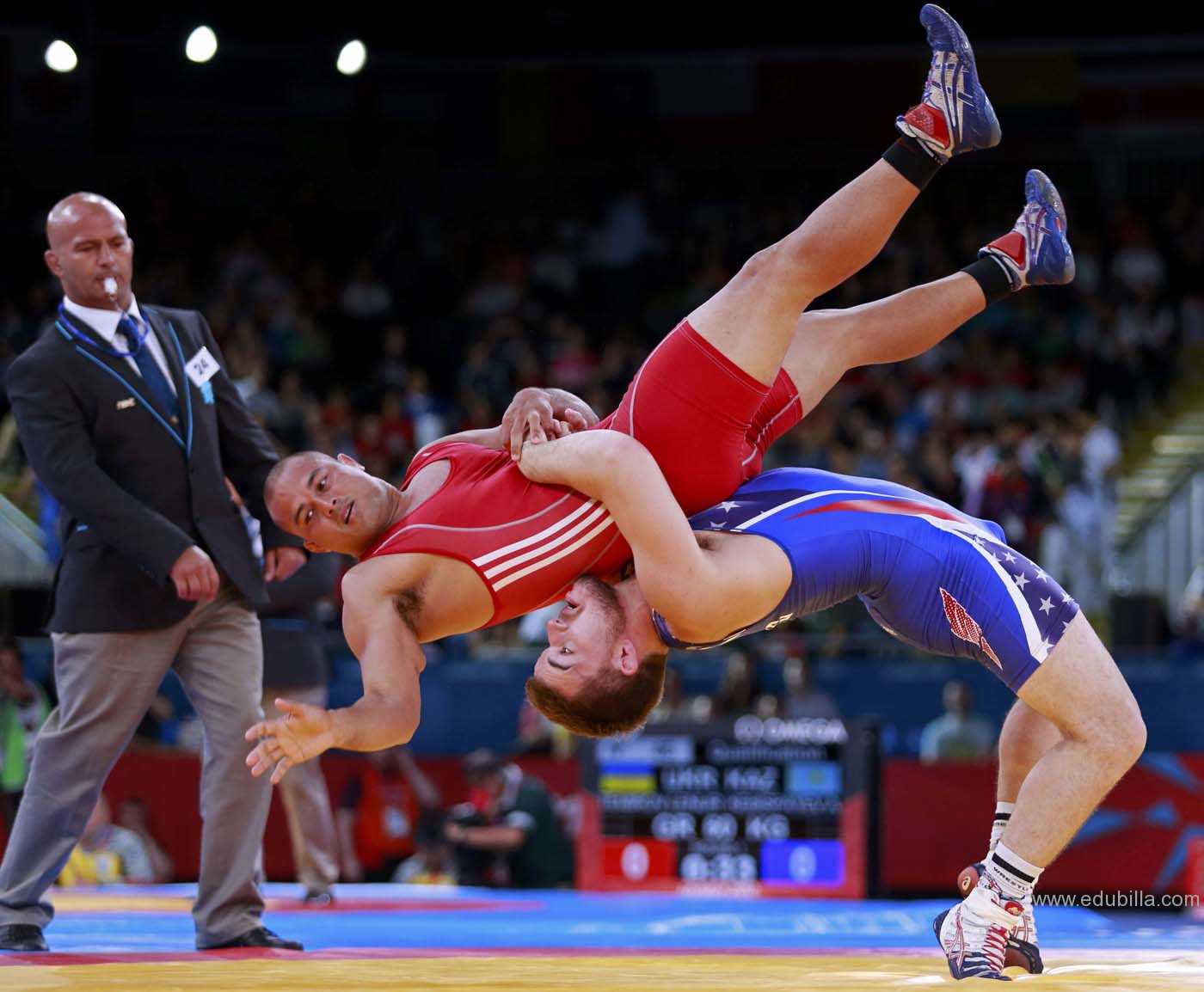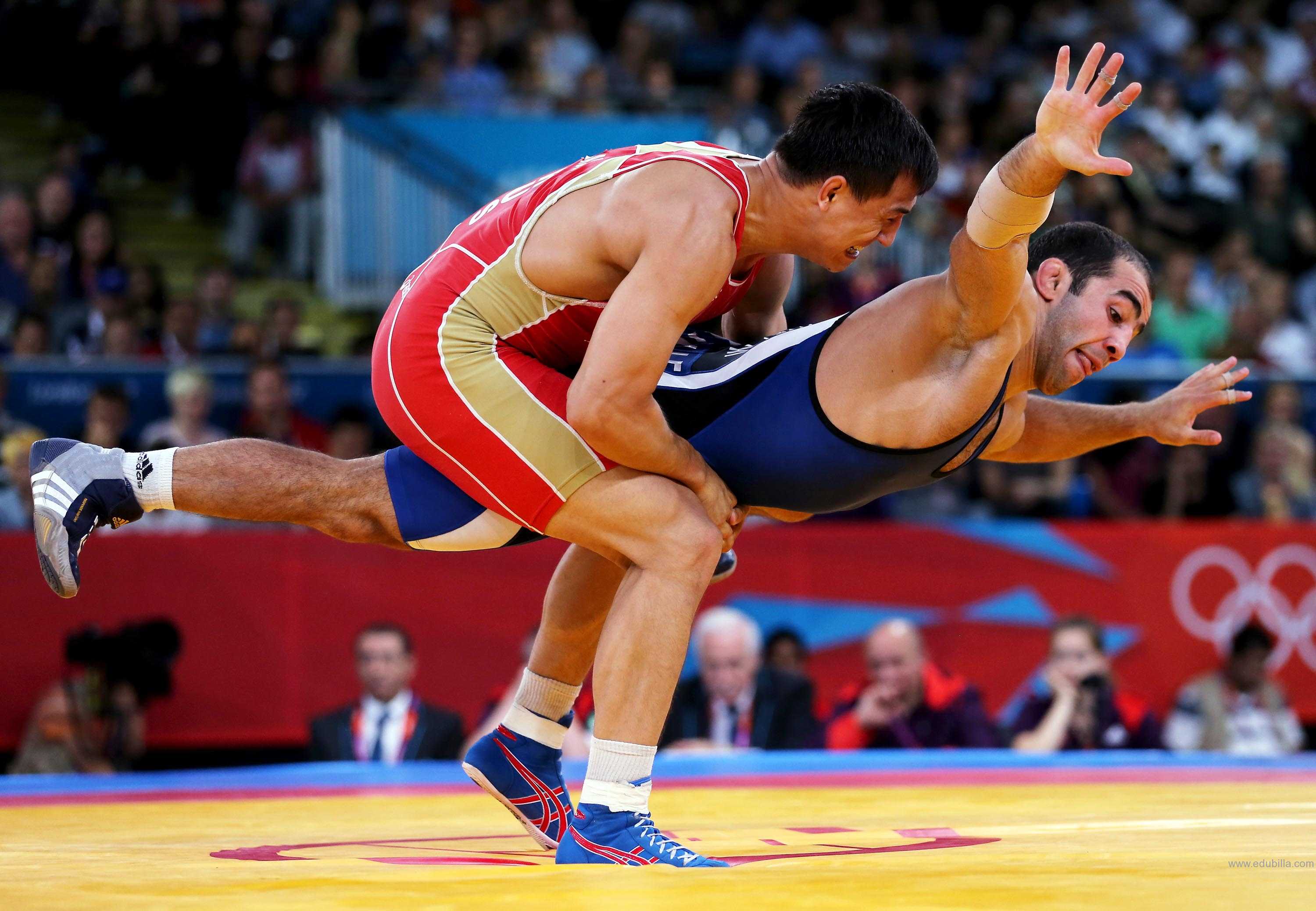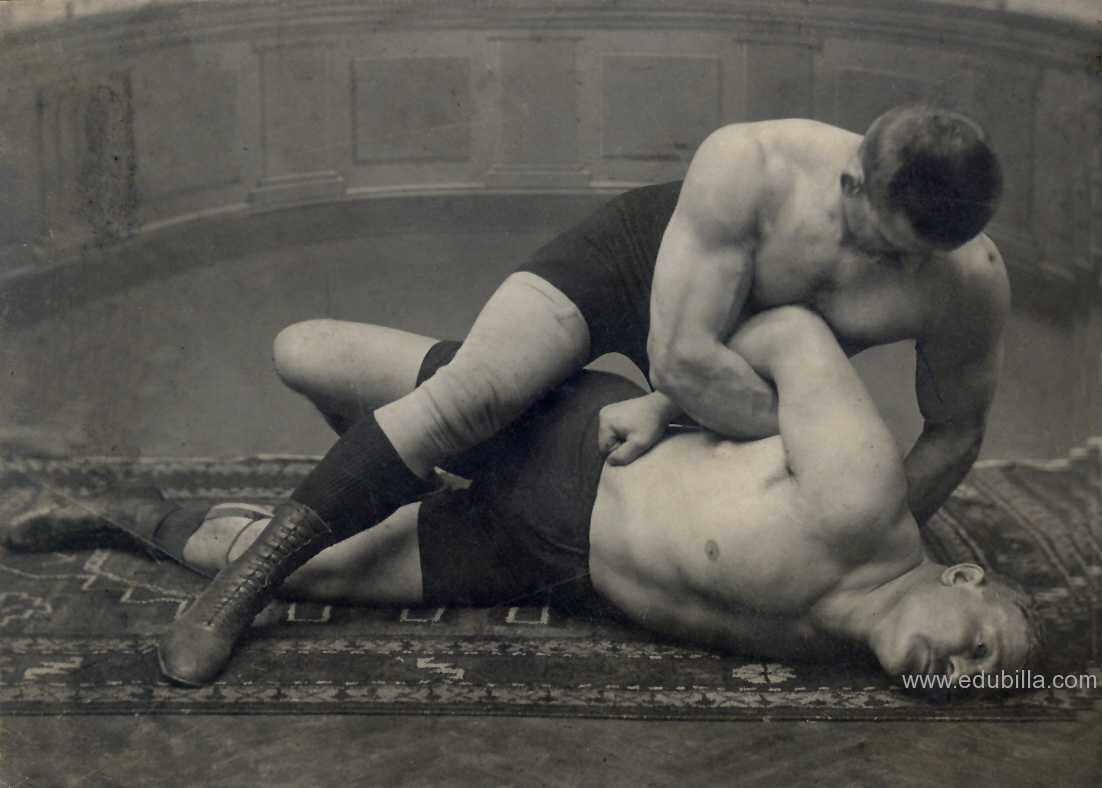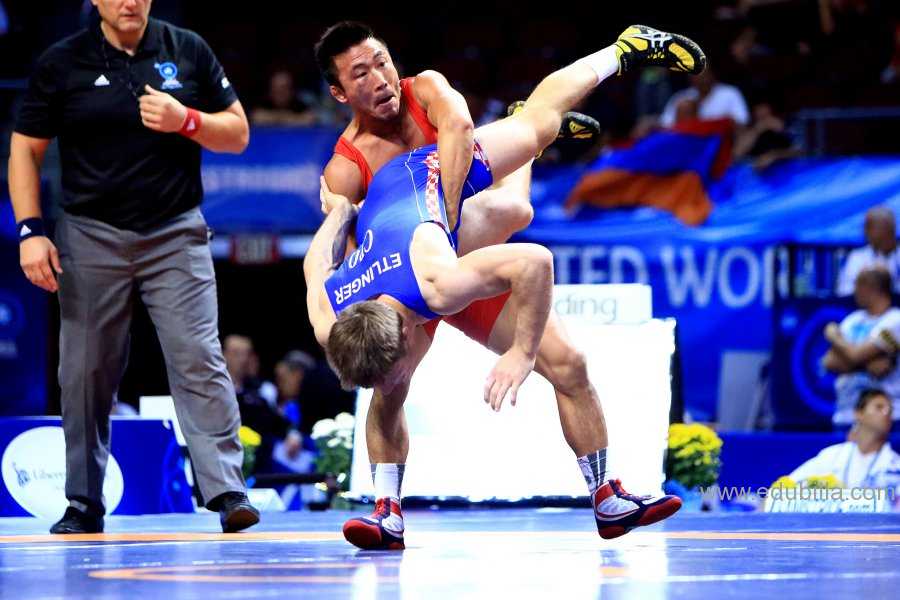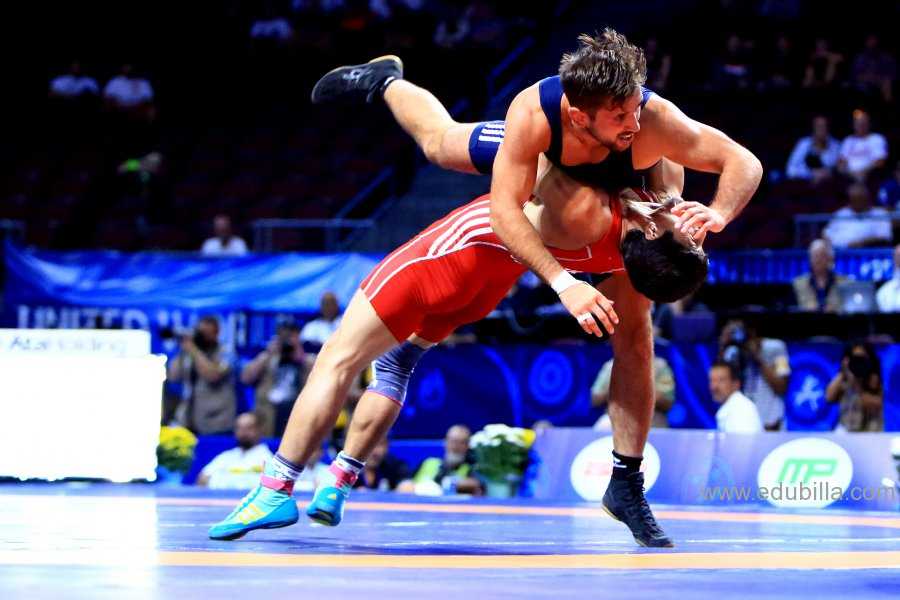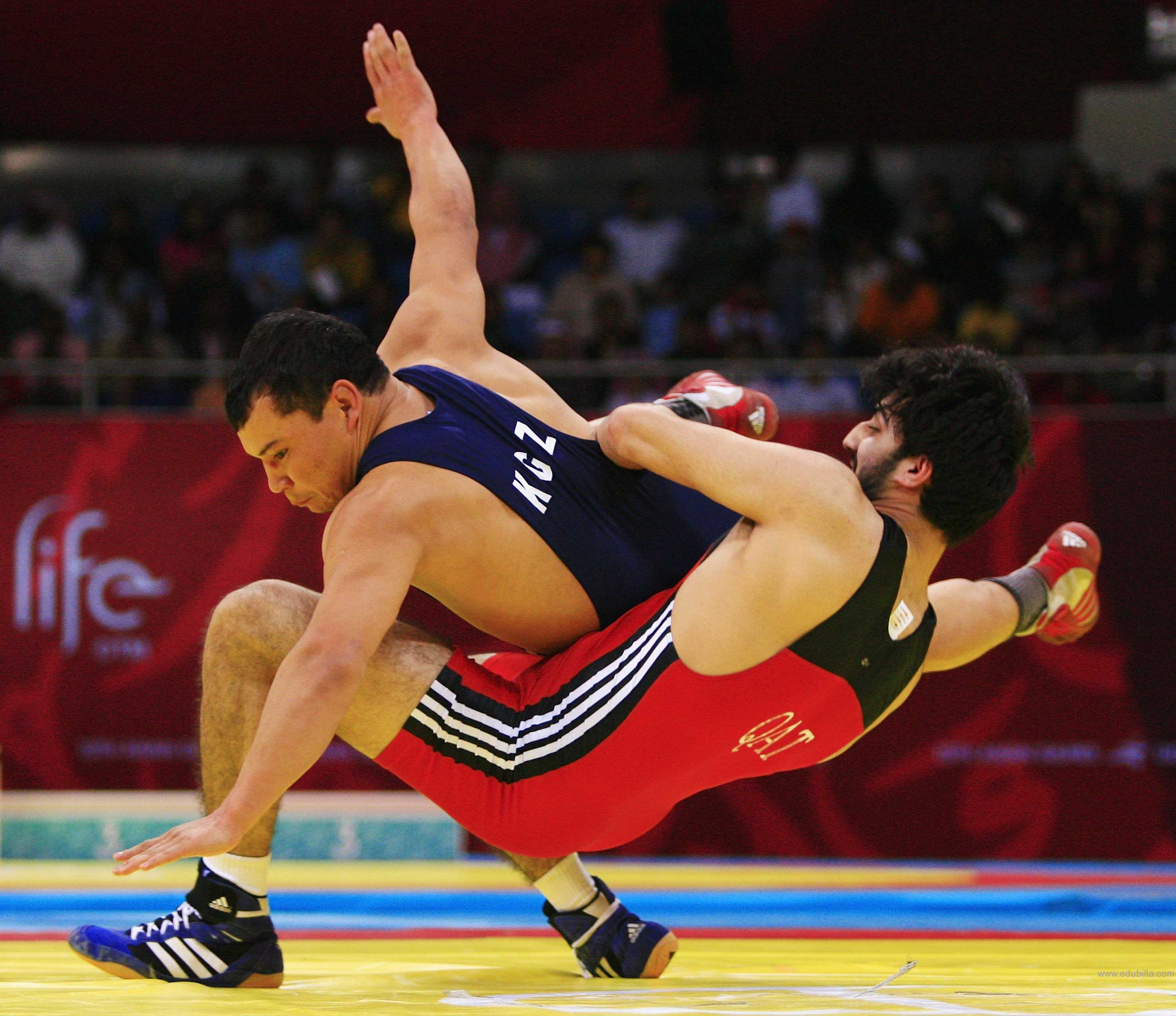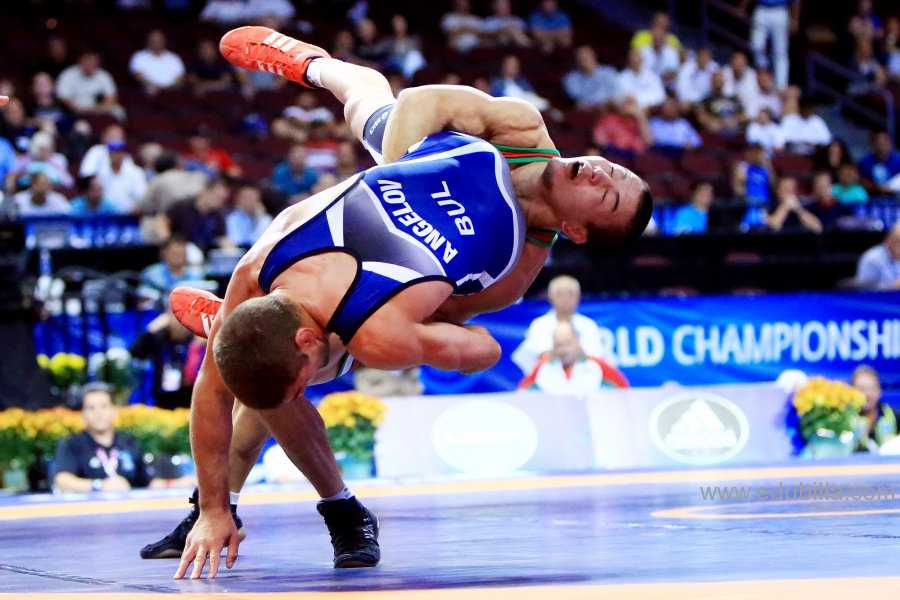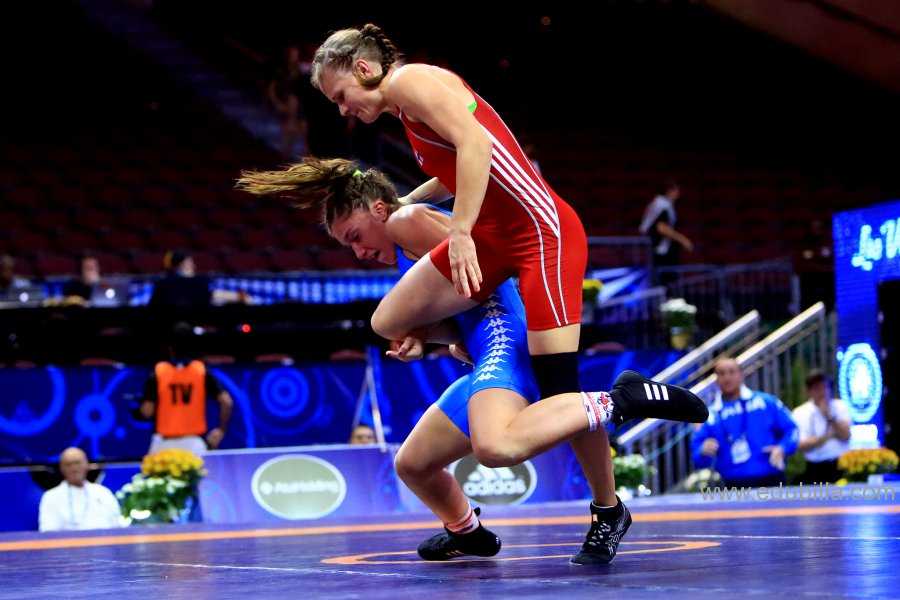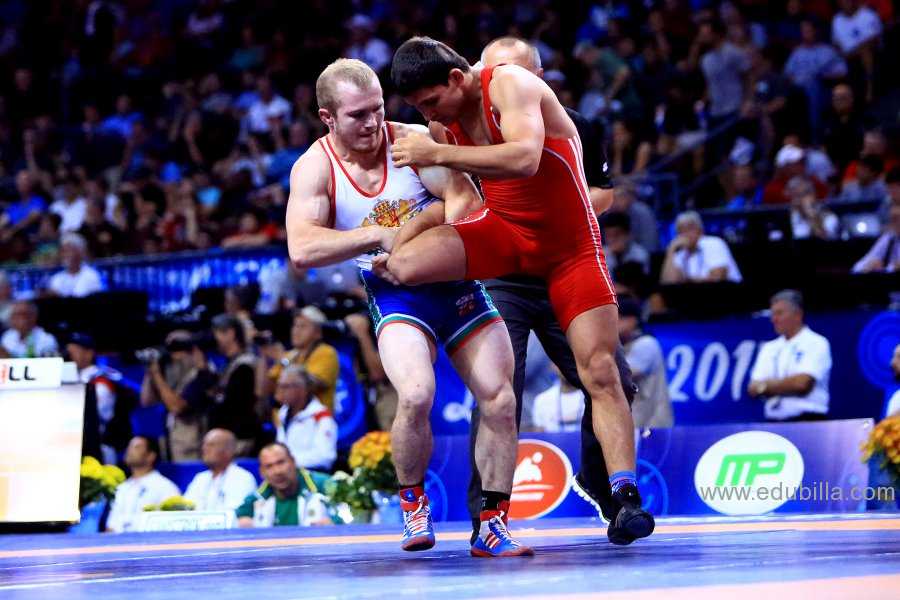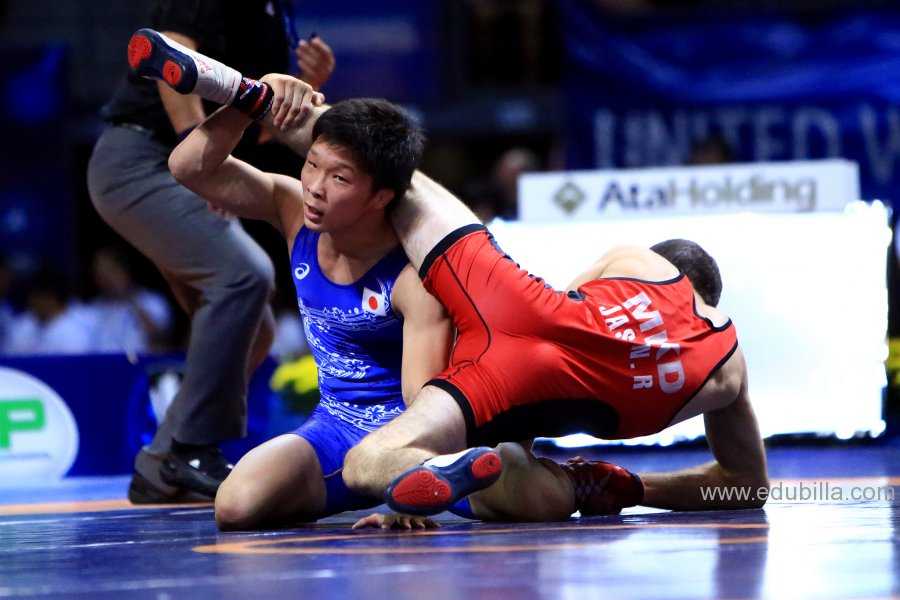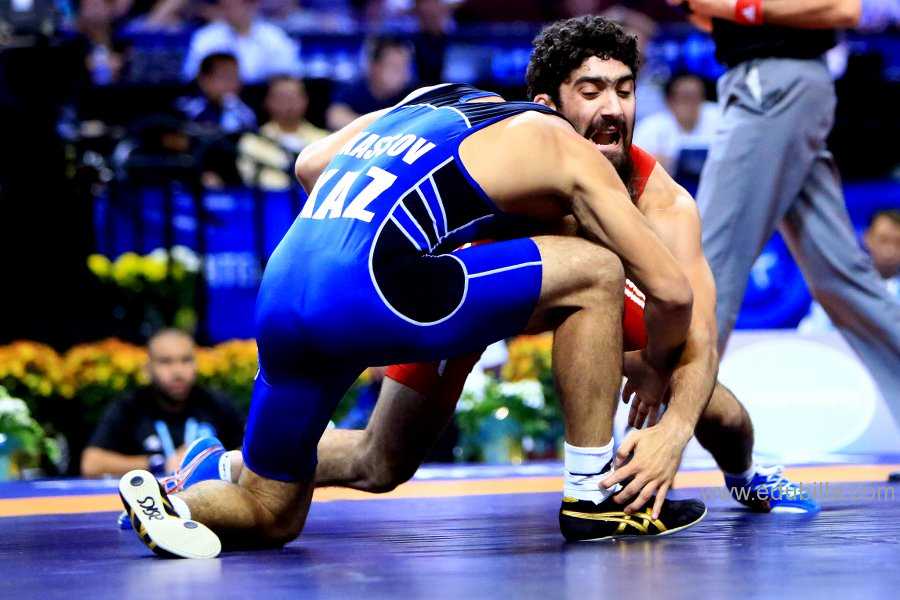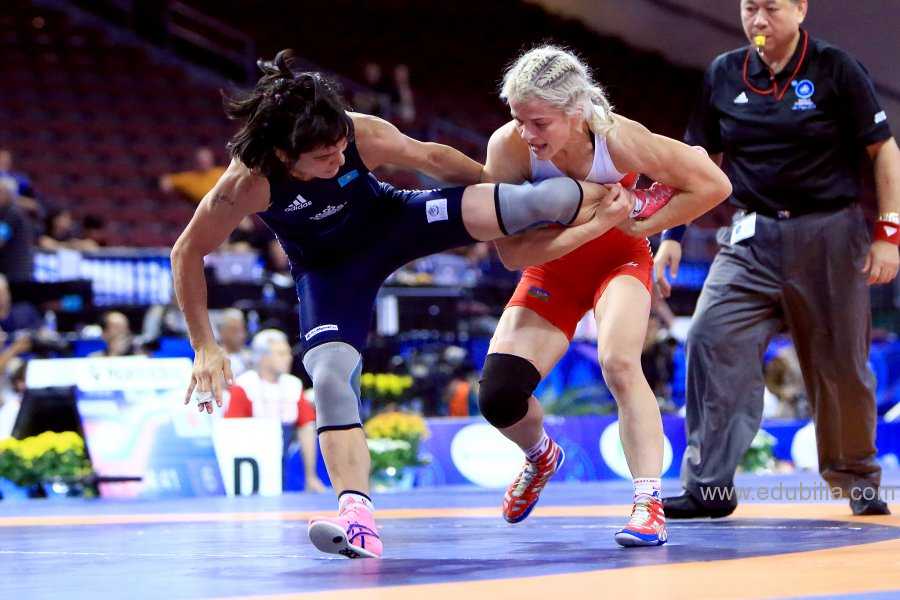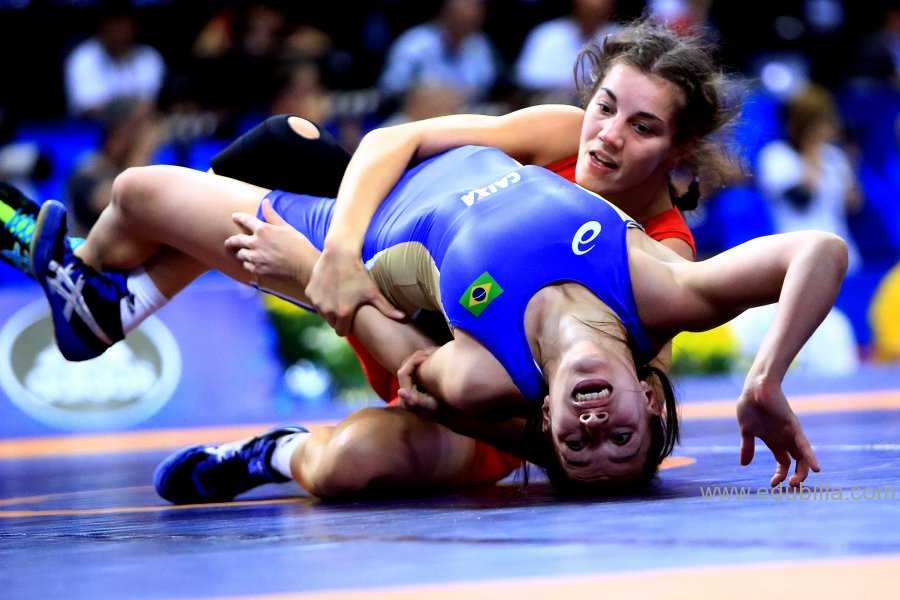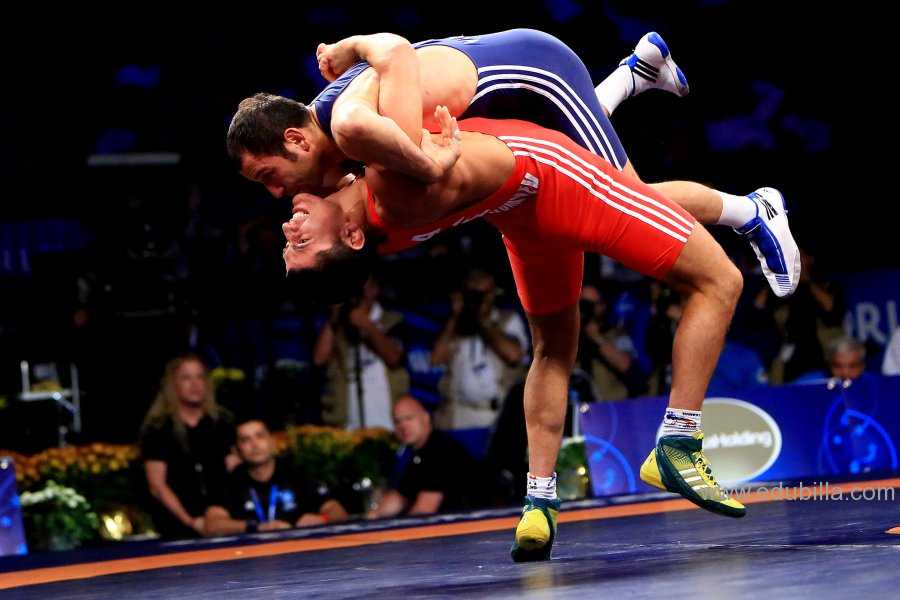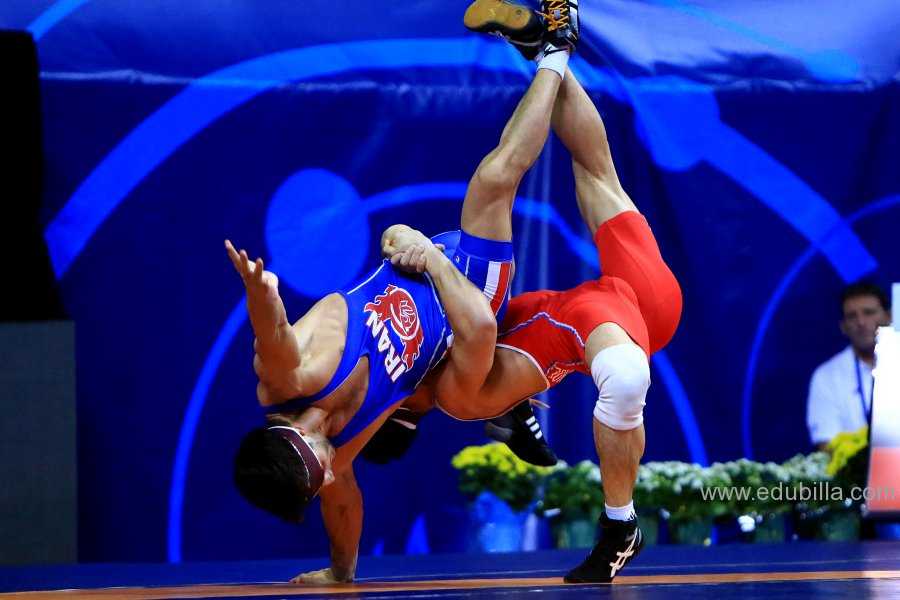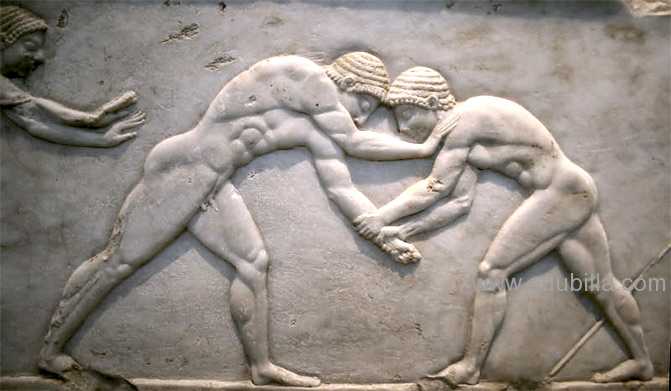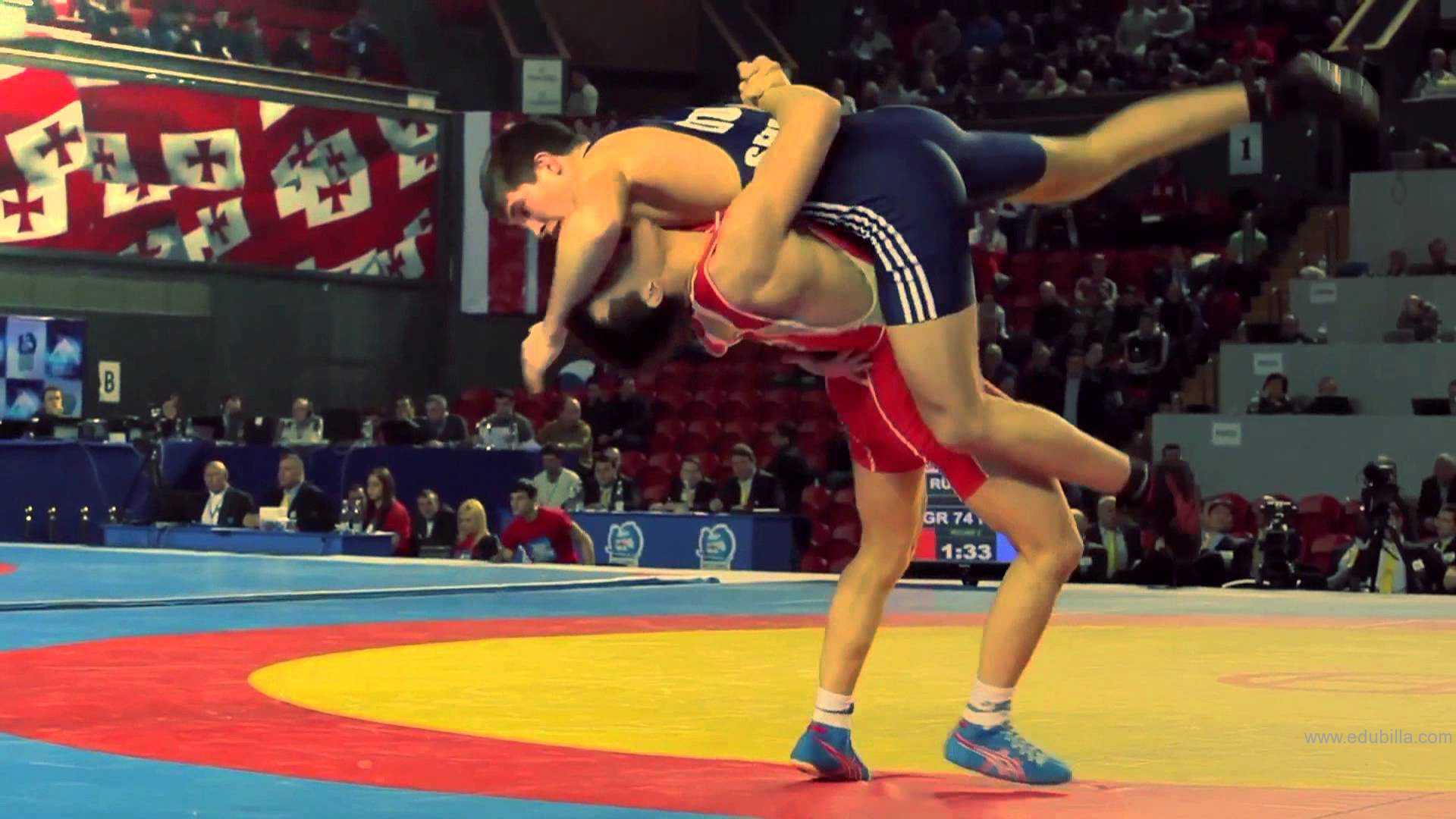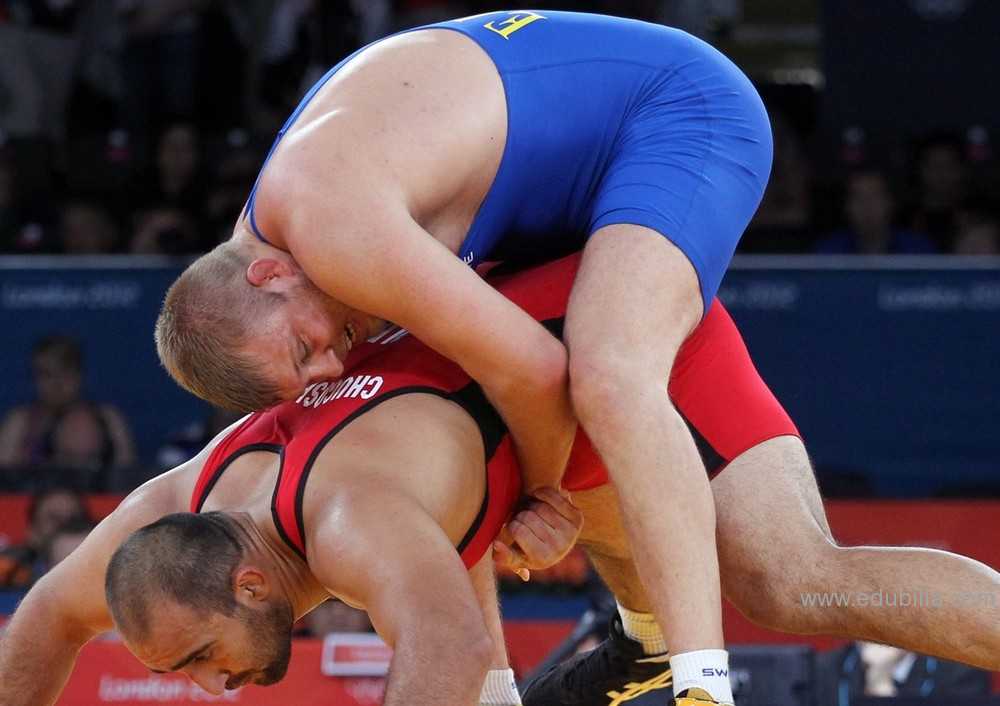
Overview Of Greco-Roman wrestling
Greco-Roman (US) or Graeco-Roman (UK) wrestling is a style of wrestling that is practiced worldwide. It was contested at the first modern Olympic Games in 1896 and has been included in every edition of the summer Olympics held since 1908.Two wrestlers are scored for their performance in two three-minute periods, which can be terminated early by a pin (or fall). This style of wrestling forbids holds below the waist; this is the major difference from freestyle wrestling, the other form of wrestling at the Olympics. This restriction results in an emphasis on throws because a wrestler cannot use trips to take an opponent to the ground, or avoid throws by hooking or grabbing the opponent's leg.
Weight classes:
Currently, international Greco-Roman wrestling is divided into four main age categories: schoolboys, cadets, juniors, and seniors.Schoolboys (young men ages 14–15; or age 13 with a medical certificate and parental authorization) wrestle in 10 weight classes ranging from 29 to 85 kg.Cadets (young men ages 16–17; or age 15 with a medical certificate and parental authorization) wrestle in 10 weight classes ranging from 39 to 100 kg.Juniors (young men ages 18 to 20; or age 17 with a medical certificate and parental authorization) wrestle in eight weight classes ranging from 46 to 120 kg.Seniors (men ages 20 and up) wrestle in seven weight classes ranging from 50 to 120 kg.For men, there is also a special category for some Greco-Roman competitions, "Veterans", for men ages 35 and older, presumably featuring the same weight classes as seniors.Also, all of the men's age categories and weight classes can be applied to freestyle wrestling.Wrestlers after weigh-in may only wrestle in their own weight class. Wrestlers in the senior age category may wrestle up a weight class except for the heavyweight division (which starts at a weight more than 96 kg for the men).Different nations may have different weight classes and different age categories for their levels of Greco-Roman competition.
Layout of the mat:
The match takes place on a thick rubber mat that is shock-absorbing to ensure safety. For the Olympic Games, all World Championships, and World Cups, the mat has to be new. The main wrestling area has a nine-meter diameter and is surrounded by a 1.5 meter border of the same thickness known as the protection area. Inside the nine meter in diameter circle is a red band of one meter in width that is on the outer edge of the circle and is known as the red zone. The red zone is used to help indicate passivity on the part of a wrestler; thus, it is also known as the passivity zone. Inside the red zone is the central wrestling area which is seven meters in diameter. In the middle of the central wrestling area is the central circle, which is one meter in diameter. The central circle is surrounded by a band 10 centimeters wide and is divided in half by a red line eight centimeters in width. The diagonally opposite corners of the mat are marked with the wrestlers' colors, red and blue.
Development of Greco-Roman wrestling:
In addition to the Greeks, wrestling was extremely popular among ancient Romans. But the Romans adopted a wrestling style that was less brutal than the Greeks' style. Amateur wrestling continued throughout the middle ages in England, France and Japan. European settlers in America practiced wrestling, as did Native Americans. The first national championships for wrestling in the United States were held in 1888, and continued through the early 1900s. The most popular wrestling style of that time was Greco-Roman wrestling, which allows holds only to the upper body. The name Greco-Roman was applied to this style of wrestling as a way of asserting it to be similar to the wrestling formerly found in the ancient civilizations around the Mediterranean Sea. Other styles varied by nation, with Iceland's Glima wrestling, Britain's Cumberland wrestling and Switzerland's Schwingen wrestling style.
Game Rules
General rules
- Wrestlers are engaged in battle on the carpet;
- The carpet is a square vinyl-covered mat; one side is 12 meters;
- The minimum thickness of the carpet is 4 centimeters;
- The so-called "area of competition" is a yellow circle with the diameter of 9 meters, in the center of which the small internal or another way called central circle is red marked with the diameter of 1 meter;
- At a small circle the fight is just beginning, but not maintained. This is the place where the wrestlers return each time after stopping the fighting as well as setting one of the partners in the position of pit;
- The main action takes place at 8 - meters zone of combat. The red stripe passes into the 9 - meters perimeter of a ring inside with width of 1 meter - the so-called "zone of passivity".
Participants:
- Only two athletes participate in one battle;
- The aim is to force the opponent to touch the carpet by both vanes and keep him in this position not less than 2 seconds;
- Single combat consists of two three-minute rounds with a break in 30 seconds.
The monitoring of the fight:
- Compliance with the rules of wrestling, appearance and equipment of athletes are followed by the arbitrator’s team, who also fixes an account in the wrestling;
- The arbitrator’s team includes referee (an arbitrator on the carpet), the lateral arbitrator and the head of the carpet. There is also arbitrator-timekeeper.
The rules how to follow the battle:
- In Greco-Roman wrestling athlete must accompany his opponent dropped to the carpet;
- In freestyle wrestling as well as in Greco-Roman wrestling the trick called "scissors" is banned, when legs skew opponent around the neck;
- If any of the wrestlers goes into exclusion zone, the fighting is going to be stopped and resumed at the center of the ring;
- It is banned for wrestlers to pull each other by the hair, ears, genitals, to nip, to bit, to cause any strikes, to attack the eyes, to implement elbow or knees pressure on the abdomen, to catch hold of the clothes and to talk during the fighting;
- During the wrestling the doctor should be present, who is empowered to stop the fighting if the health of any of the athletes is in danger;
- Clinch and counterattack, which began in the center of the carpet, shall be considered valid, wherever they were finished;
Breaking the rules:
- Wrestler, allowing for obvious breaking the rules or following brutal acts, is going to be immediately disqualified;
- For breaking the rules the athlete is punished by getting penalty points;
- The second warning for the banned clinch, for example, arm-twisting by more than 90 degrees, imposing "locks" by the hands to the forearms, clinch the opponent's head or neck with both hands results the point to the opponent;
- Wrestler is guilty of passivity if he is not managed to make an effective clinch or if he permanently in any form goes away from active combat;
- Passive wrestler gets from referee the remark. Active wrestler has got more favorable benefits;
- In Greco-Roman wrestling, unlike freestyle wrestling, any kind of takeovers below the belt, the impact on opponent’s feet, kicking an opponent and etc. are banned.
Points:
- Points are awarded for performing techniques, counterattacks, combinations and protector’s tricks;
- A wrestler receives a point for getting the partner into parterre;
- Two points are awarded for getting the opponent in the position where his shoulders are turned the way that his back is in acute angle to the carpet. This is considered as a "dangerous situation";
- The next point can be awarded if the opponent will be deducted in the position described above for 5 seconds what is counted by referee;
- Three points can be awarded if the partner is translated into parterre or in the "dangerous situation" by one trick;
- Five points are of "worth" if to throw an opponent in the air or to implement other similar techniques;
- Five points are awarded for that kind of throws, when during the throw the center of gravity of the person that is thrown is above the centre of gravity of the person that throws.
Consideration of the winner:
- Victory in both types of wrestling is considered in the following cases: full victory is prematurely awarded if there are fixed opponent’s blades on the carpet (on Russian «????» - from the French «toucher»), if the opponent is disqualified or the advantage of one of the wrestlers is in 10 or more points;
- The victory counting the points is awarded after the time off with the condition the difference in points is less than 10 points;
- Single combat consists of two three-minute rounds with a break in 30 seconds;
- «Tie» in the wrestling can not be used, but for considering the victory it is needed that the difference in the account must be more than three points;
- If none of the wrestlers is not gaining points, or the difference in the account is less than three points, the partners are put in the cross clinch, identifying advantage by lot;
- In this case the point is awarded to the wrestler who will be managed to hold the first attack action;
- Wrestler may appeal against the official outcome of the match in writing within 30 minutes after the end of the fight;
- If the appeal is accepted and supported by the appeal jury, the match will be taken again.
Equipments Need For Greco-Roman wrestling
Boots:
Made of soft leather with no heels or studs.
Wrestling suit:
Made of stretch material, it must be either red or blue.
History Of Greco-Roman wrestling
- 3000 BC-The earliest images of western wrestling were found in Sumeria, dating back to around 3000 BC. (Terry)
- 2600 BC-A Bronze figurine of two wrestlers was found in Khafaji, Iraq which dates to around 2600 BC. (Dellinger)
- 2300 BC-Images of wrestlers were found in an Egyptian burial tomb, dating to around 2300 BC. (Carroll)
- 2000 BC-The Epic of Gilgamesh, written around 2000 BC, gives one of the first historical records of wrestling, when Gilgamesh wrestles against Enkidu. (Squared Circle, June, 2013)
- 1848-Greco-Roman wrestling was born in France. The Greco Roman style is unique in that it forbids attacks to the legs. The wrestlers must possess powerful upper bodies and have the ability to lift and throw their opponents. (Sparta Club, history of the Greco)
- 1896-Greco-Roman wrestling was included in the first modern Olympic Games in 1896 and has been included in every summer Olympics held since 1908. (Olympic.org,WRESTLING GRECO-ROMAN)
- 1922-In 1922, catch wrestling was dropped from both the Olympics and the Amateur Athletic Union (AAU) in favor of freestyle and Greco-Roman wrestling. Both freestyle and Greco-Roman are still in the Olympics today. (Nash Aug. 2012)

Olympic Timeline:
1896 – Athens, Greece
The first modern Olympics was held in Athens, Greece, home of the ancient Olympics. Wrestling, one of the featured sports of the ancient Games, was included in the program of the first modern Olympics. The style was Greco-Roman, and just one weight class was contested, heavyweight. Karl Schumann of Germany became the first Olympic wrestling gold medalist. No U.S. wrestlers participated in the Athens Games.
1900 – Paris, France
Wrestling was not included in the program at the 1900 Olympics, the only time during the modern Games that wrestling was not a featured sport.
1904 – St. Louis, Mo.
The first of the modern Olympic Games held in the United States featured freestyle wrestling, a style that was popular in the United States. The U.S. was the only nation entered in wrestling and scored a clean sweep of all the wrestling medals, with seven golds, seven silvers and seven bronzes.
1906 – Athens, Greece
Athens became the first city to host more than one modern Olympic Games. Greco-Roman wrestling, more popular than freestyle in Europe, was the featured style, and freestyle was not included. Three Greco-Roman champions were crowned, and the United States did not participate in wrestling event.
1908 – London, England
The London Olympics featured both of the international wrestling styles for the first time, freestyle and Greco-Roman. The United States dominated the freestyle light weights, with George Mehnert claiming the 119-pound title and George Dole capturing the 132.5-pound event. For Mehnert, it was a second career Olympic title. It would be another 84 years before an American wrestler would win a second Olympic gold medal, when John Smith and Bruce Baumgartner claimed second titles in Barcelona. Mehnert was a club wrestler from Newark, New Jersey, while Dole, who competed at Yale, helped establish the tradition of college wrestlers moving on to Olympic glory.
Greco-Roman was dominated by European nations, and the United States did not participate.
1912 – Stockholm, Sweden
Greco-Roman, the favored style of the Scandinavian nations, was the only wrestling event in Stockholm, and the gold medals went to athletes from either Finland or Sweden. The United States entered athletes, but did not medal.
20 Jan 2015
The 1900 Games were the only ones where wrestling was not present in any shape or form. As from the 1908 Olympic Games in London, Greco-Roman wrestling has always been included on the programme. Since the 1920 Antwerp Games, there have been both freestyle and Greco-Roman wrestling competitions.
20 Feb 2015
Made of soft leather with no heels or studs.
20 Mar 2015
With the possible exception of athletics, wrestling is recognised as the world’s oldest competitive sport. Indeed cave drawings of wrestlers have been found dating as far back as 3000 BC. The sport was introduced into the ancient Olympics in 708 BC.
Origin Of Greco-Roman wrestling
Greco-Roman wrestling originated in France in the early 19th century, in imitation of classical Greek and Roman representations of the sport. It became favoured in Scandinavian countries, and Swedish and Finnish wrestlers won many Olympic titles from 1912 to 1948, after which the Soviet Union and other countries came to the fore.
The oldest sport:
With the possible exception of athletics, wrestling is recognised as the world’s oldest competitive sport. Indeed cave drawings of wrestlers have been found dating as far back as 3000 BC. The sport was introduced into the ancient Olympics in 708 BC.
The main event:
When the modern Olympic Games resumed in Athens in 1896, wrestling became a focus of the Games. This was because organisers considered it historically significant; indeed Greco-Roman wrestling was deemed a pure reincarnation of ancient Greek and Roman wrestling.
Greco vs freestyle:
In Greco-Roman wrestling, the wrestlers use only their arms and upper bodies to attack, and can only hold those same parts of their opponents. As the name suggests, freestyle is a much more open form in which wrestlers also use their legs and may hold opponents above or below the waist.
Olympic history:
- The 1900 Games were the only ones where wrestling was not present in any shape or form. As from the 1908 Olympic Games in London, Greco-Roman wrestling has always been included on the programme. Since the 1920 Antwerp Games, there have been both freestyle and Greco-Roman wrestling competitions.
- Today, the nations dominating this sport are the Russian Federation, closely followed by the USA in freestyle wrestling. Iran, Turkey and Mongolia, countries in which wrestling is the national sport, also have some very high-level champions.
- At the 2000 Olympic Games in Sydney, the Greco-Roman wrestling programme was modified. Only eight weight categories are now represented in each style, as opposed to the 10 that had been included since the 1972 Games in Munich. Since the 2004 Games in Athens, men have competed in only seven weight categories.
Governing Bodies
United World Wrestling (UWW):
United World Wrestling (UWW) is the international governing body for the sport of amateur wrestling; its duties include overseeing wrestling at the Olympics. It presides over international competitions for various forms of wrestling, including Greco-Roman wrestling, freestyle wrestling for men and women, as well as others. The flagship event of UWW is the Wrestling World Championships. It was formerly known as the International Federation of Associated Wrestling Styles (French: Fédération Internationale des Luttes Associées, FILA), having assumed its current name in September 2014.

Major wrestling disciplines within UWW:
UWW has come to set rules and regulations and hold international competitions in the following wrestling styles:
- Greco-Roman wrestling
- Freestyle wrestling
- Grappling
- Beach wrestling
- Amateur pankration
Adaptations to the international regulations set by UWW are usually made by each national federation for all national and regional competitions.
Events:
UWW is the body responsible for supervising Olympic wrestling, and so competitions for freestyle and Greco-Roman wrestling take place every Summer Olympiad.
Activities:
Besides the Summer Olympics, there are also various international competition such as the Commonwealth Games, the Pan-American Games, etc. that have wrestling as an official sport. Also, the Continental Championships and Continental Cups usually take place annual and are regulated by each Continental Committee. Then, there are World Championships that usually take place among the various nations every year (for the senior age category, every year except the year the Summer Olympics are held), and many international tournaments that take place between countries and among wrestlers of the same country (such as the United States Nationals in freestyle and Greco-Roman).
Honors:
UWW also sponsors training for athletes in the various wrestling styles at training centers, currently located in Finland, France, Italy, Japan, Spain, Turkey, and the United States.The International Wrestling Hall of Fame, located in Stillwater, Oklahoma awards individuals with honors in Greco-Roman wrestling, freestyle wrestling, women's wrestling, and officiating.
Awards Related To Greco-Roman wrestling
Canada Awarded United World Wrestling Awards:
- Golden Boot Awards
- Golden Star Awards
- United World Wrestling presented Star Awards to Canadian representatives for their outstanding service to wrestling in Canada.
- A Silver Star Award was presented to Executive Director of Wrestling Canada Lutte
Sample Documents Of Greco-Roman wrestling
-Sachin Tendulkar

